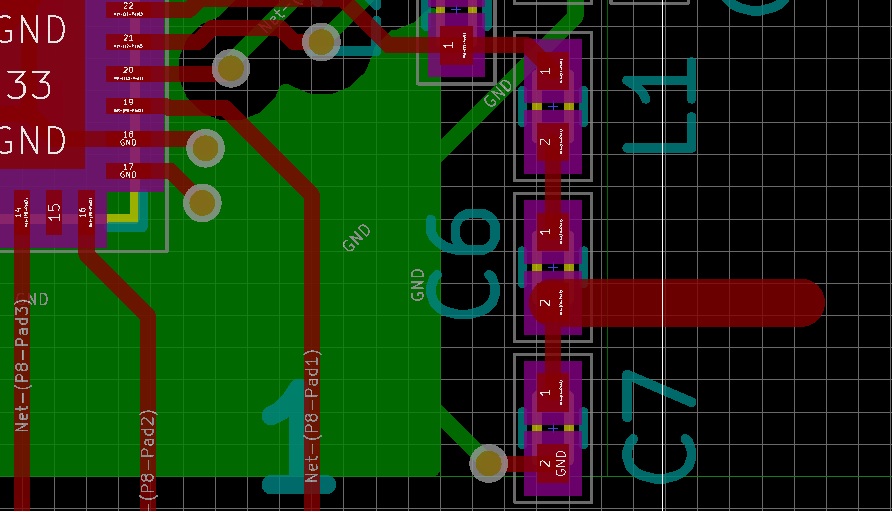Hi,
I am creating the first prototype for my BLE product and for now I used the suggested layout from the datasheet, but I am kind suspicious of that layout it seems very small (3,85 x 0,75 mm). I am using the layout from 17.5 topic (I downloaded the gerber).
Below the image from my layout (C6 = 1,8pF and C7 = 1,2pF) :

P.S: I am 100% newbie in RF Antenna design.
Regards,

